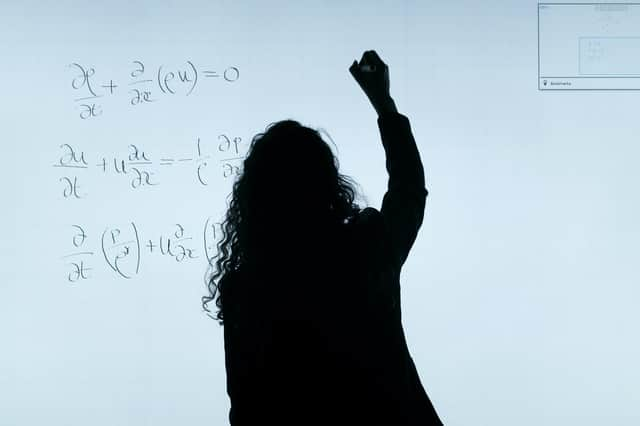Applied maths is powering our modern lives, even if we don’t know it – Professor Sean Mckee


Unless, that is, I have a chance to interject that really, I’m more like a scientist or engineer: discovering things and designing new products.
In general, an applied mathematician devises mathematical models to support the faster design of new product prototypes and more, at considerably less expense than experimentation.
Advertisement
Hide AdAdvertisement
Hide AdIn addition, they often conduct academic studies to provide insight into scientific phenomena. This work usually involves using equations and other mathematical analysis to create pictures and data which engineers, clinicians and many others use to inform their work and decisions.
We are constantly surrounded by these applied mathematical models every day, even if we don’t know it.
The most elegant model is probably that of Edinburgh-born James Clerk Maxwell, who in the 1800s developed the theory of electromagnetism by building on Michael Faraday’s earlier discoveries. Maxwell’s model has immeasurably contributed to the staples of our modern life including electric light, heating, and refrigeration.
Looking even further back, in the 1600s Isaac Newton discovered the three laws of motion, yet another mathematical model, which has allowed rockets to be launched and reach distant stars with incredible accuracy.
A more recent Scottish mathematician, Frank Leslie, developed the theory of liquid crystals in the 1960s: our modern televisions and smartphones could not have been produced without his equations providing the quantitative results of the switching crystals.
Since then, some mathematicians have turned their attention to biology and physiology. One particularly exciting biological application of mathematics is around heart valves.
When the heart beats, the left ventricle squeezes blood spirally into the aortic valve and subsequently into the aorta. By doing so, it prevents stasis and consequent thrombus formation, commonly referred to as clotting.
For many years, David Wheatley, the first surgeon to perform a heart transplant in Scotland, had an idea to create a more durable yet cheap-to-produce heart valve where clotting does not occur.
Advertisement
Hide AdAdvertisement
Hide AdApplied mathematics is allowing him to achieve his dream by not only recreating the shape but modelling the valve’s function under pressure exerted by the blood flow.
As may be becoming apparent, mathematics pervades and permeates all science and engineering.
The use of applied mathematical models allows us to power our homes and heating systems, enables our immeasurably relied-on smartphones to work, and with recent developments may even improve the function of the hearts in our chests.
While many, including my fellow party guests, may have failed to realise the entire role of maths and mine in applying it to our lives – it is safe to say, if they did, it could be one long conversation.
Sean Mckee is a research professor in mathematics and statistics at the University of Strathclyde, and a fellow of the Royal Society of Edinburgh. This article expresses his own views. The RSE is Scotland's national academy, bringing great minds together to contribute to the social, cultural and economic well-being of Scotland. Find out more at rse.org.uk and @RoyalSocEd.
This article has been edited to remove the erroneous statement, “By doing so, it prevents blood flow and creates thrombus formation (clotting)” and replace it with “By doing so, it prevents stasis and consequent thrombus formation, commonly referred to as clotting.”
A message from the Editor:
Thank you for reading this article. We're more reliant on your support than ever as the shift in consumer habits brought about by coronavirus impacts our advertisers.
If you haven't already, please consider supporting our trusted, fact-checked journalism by taking out a digital subscription.
Comments
Want to join the conversation? Please or to comment on this article.
